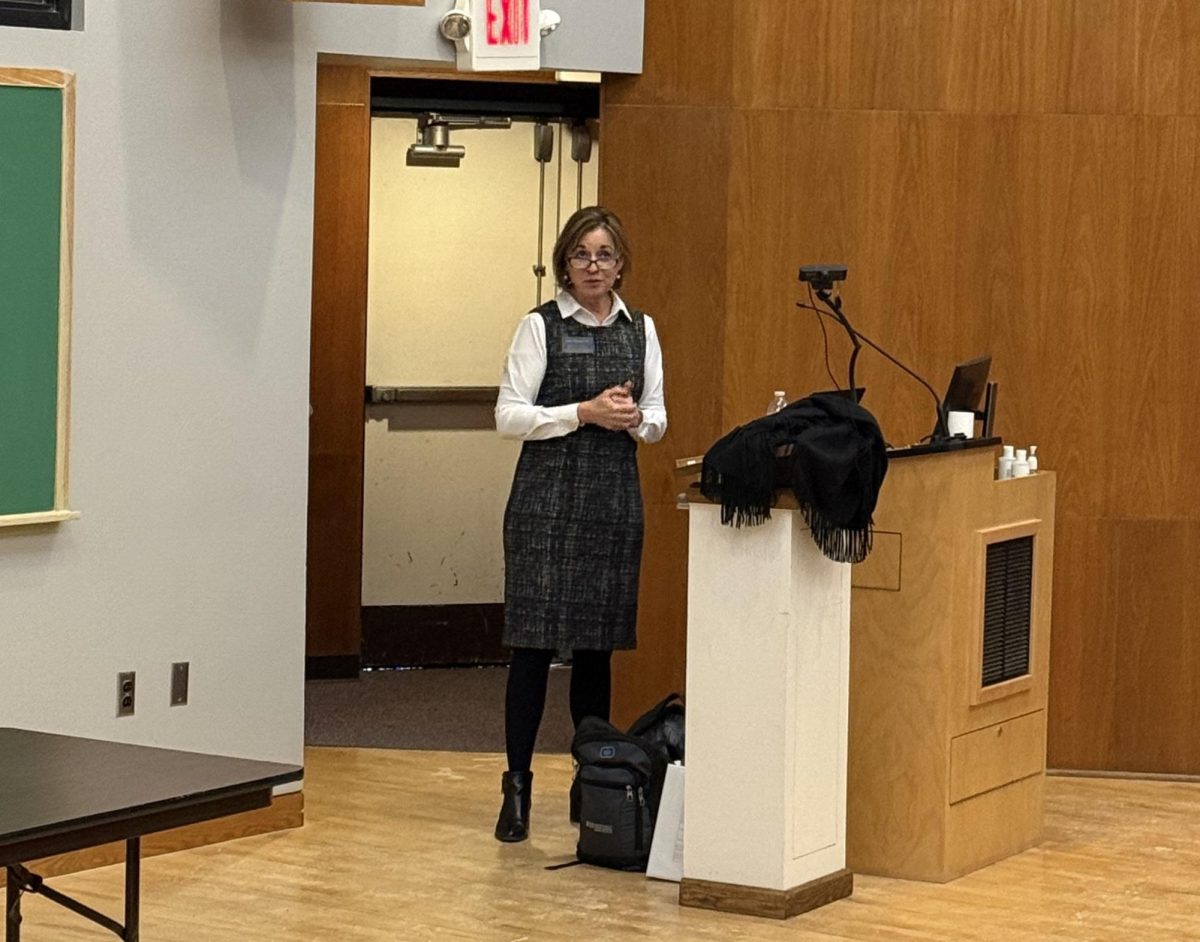Starting this January, the gators are going to get a whole lot greener when Allegheny switches to 100 percent wind-generated electricity.
This switch will cut the college’s greenhouse gas emissions by 52 percent.
The transition to wind power is the first major step forward in Allegheny’s Climate Action Plan, a proposal intended to help the college reach climate neutrality, or a state of producing no net greenhouse gas emissions, by 2020. Allegheny pledged to work towards this goal in 2007 when it signed the American College and University President’s Climate Commitment (ACUPCC).
Allegheny was able to utilize wind energy and make this significant cutback in greenhouse gas emissions by purchasing Renewable Energy Credits (RECs).
RECs, as defined by the U.S. Environmental Protection Agency, are like property rights to environmental, social and other qualities of renewable energy that aren’t related to the physical energy itself. This allows institutions in places where there are no renewable energy generators to invest in green electricity.
When an institution purchases RECs, the company that produces the physical electricity will feed that power into the national grid where it mixes with electricity collected from other sources such as coal or natural gas.
“You can purchase Renewable Energy Credits to say, okay, we’re just getting whatever electricity is coming out of the socket but we are also supporting wind electricity,” said Kelly Boulton, sustainability coordinator.
Renewable energy generators, wind turbines in this case, create one REC for every 1,000 kilowatt hours of electricity put into the grid.
Last year, the college used 15 million kilowatt hours of electricity, a number that is expected to rise with the increased student population and the addition of North Village Two.
Allegheny has been investing in RECs for several years, but in the past they have only substituted 15 percent of our total energy consumption. Operating with 100 percent renewable energy was not previously possible because of the costliness of wind power.
Some opponents of the switch, all from sources outside the college, voiced their concerns that Allegheny is squandering money that could be used for other purposes, said David McInally, vice president for finance and planning.
The college’s investment in wind energy will lead to a total yearly increase of $29,000, bumping our electricity bill up to $1,113,000.
Both Boulton and McInally maintained, however, that Allegheny’s use of wind energy is not only environmentally but financially responsible.
“When you look at how hard students and their families work to be able to come here we have to be really responsible stewards of that money, so we wouldn’t do this if it wasn’t fiscally responsible as well,” said McInally.
Despite the increase in the bottom line, Allegheny will actually be paying less to meet its energy needs than originally anticipated. This is due to two main factors.
The first is the much better rates that Allegheny got on RECs by switching providers early in the year. The college’s electricity, though still distributed by Penn Electric Co., now comes from Constellation New Energy.
The second factor is the deregulation of electricity prices in Pennsylvania that will take place in December. These regulations placed a cap on how much electric companies could charge their clients, and it was predicted that their removal could cause energy prices to jump 20 to 40 percent.
When the budget for the 2010 to 2011 academic year was planned, this increase was accounted for and $1.22 million was set aside to pay for electricity. Because this increase was anticipated, Allegheny was able to switch to wind power, come in $100,000 under budget and leave tuition prices untouched.
“It wasn’t a huge premium to buy wind energy and it was within our budget, so that’s something the campus community can feel really comfortable with,” Boulton said.
Another aspect of this change that the campus can feel comfortable with, Boulton said, is that the Allegheny made this decision as a way to further uphold the values and standards set by the college.
“As a college, if we are teaching our students these things, we ourselves need to be supporting the renewable energy field so that we’re driving the future we’re preparing our students for,” she said.
One such student is Carlyn Johnson, ’11, who has been involved with Allegheny’s switch to wind power through her academic work studying wind feasibility in Saegertown.
Johnson noted the additional benefits of wind-generated electricity aside from the reduction in Allegheny’s carbon footprint, pointing out the health benefits of renewable energy.
“There are a lot of negative things that go along with coal that you are paying for that you don’t see in the price,” she said. “Yeah, wind is a little more expensive, but if you’re living by a wind turbine you’re not going to get asthma; if you’re living by a coal power plant that’s a lot more likely.”
Another advantage to wind power is that while the amount of natural gases left is dwindling, wind will not, which makes it a much more stable option when long-term finances are considered.
“Whether it’s oil or natural gas or whatever might be generating an electrical plant, not only does it pollute the environment, but sooner or later there will be less and less of it whereas the wind will keep blowing,” McInally said.






Riley Neugebauer • Sep 19, 2010 at 7:43 pm
This is so great! I’m really glad to hear it, as an alumni working in sustainability and on energy issues for the last few years, I’m a supporter! The financial arguments can keep these things from happening for so long, but I’m glad Allegheny had made it possible. Great mention of the unseen costs of our continued use of fossil fuels as well..